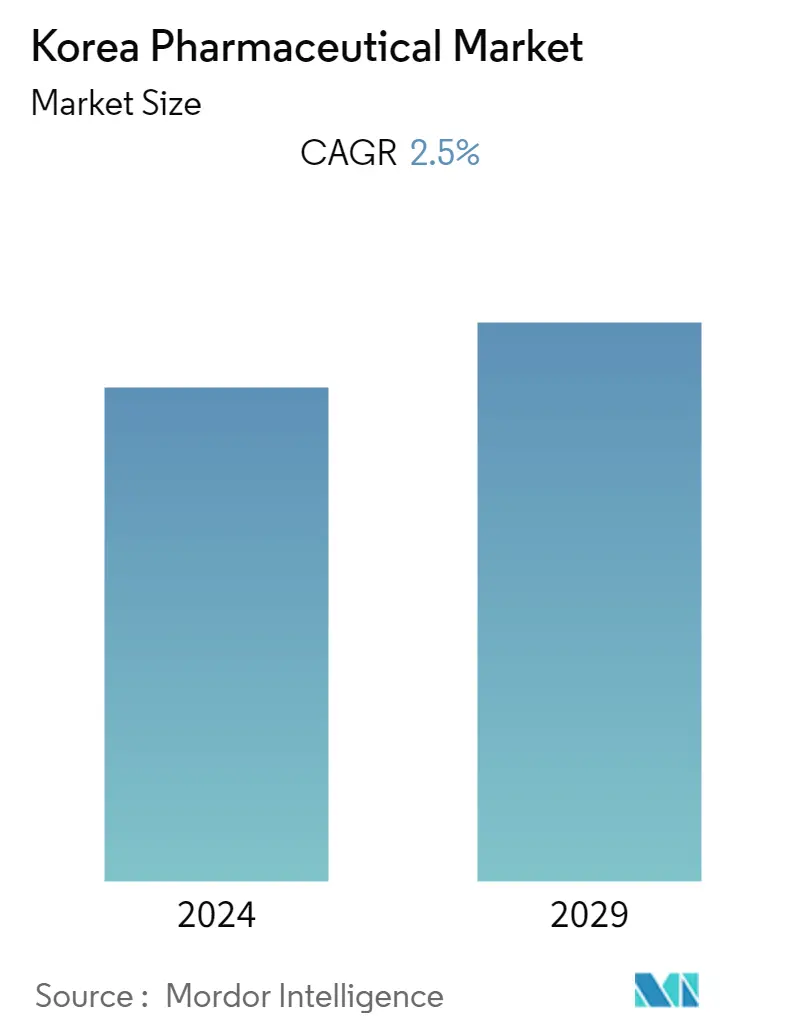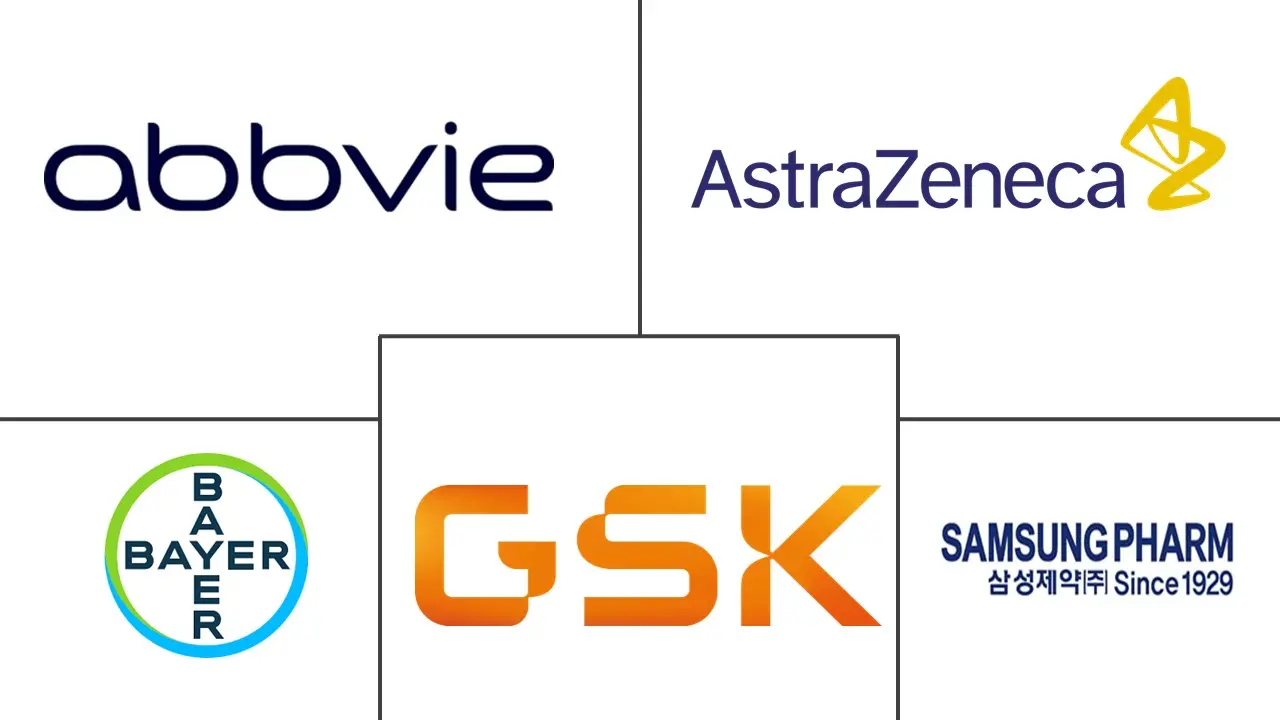Market Size of Korea Pharmaceutical Industry

| Study Period | 2019 - 2029 |
| Base Year For Estimation | 2023 |
| Forecast Data Period | 2024 - 2029 |
| Historical Data Period | 2019 - 2022 |
| CAGR | 2.50 % |
Major Players
*Disclaimer: Major Players sorted in no particular order |
Need a report that reflects how COVID-19 has impacted this market and its growth?
Korea Pharmaceutical Market Analysis
The Korean pharmaceutical market is expected to record a CAGR of 2.5% over the forecast period.
The COVID-19 pandemic affected the healthcare sector. The initial phase of the pandemic has impacted the market significantly due to restrictions on movement, supply chain disruption, travel bans, etc. Although the demand for OTC drugs and prescription drugs decreased during the pandemic, the need for OTC drugs for the common cold and fever increased, which boosted the market's growth. The import of medicinal and pharmaceutical products decreased in 2021 (3,847.1 million) compared to 2020 (4,055.5 million). However, with the released COVID-19 restrictions and resumed import and export activities, the demand for pharmaceutical products is expected to increase over the forecast period.
Factors such as the rising incidence of chronic diseases, such as cardiovascular diseases and diabetes, the increasing geriatric population, and the growing research and development activities and expenditures in the country are expected to drive the market's growth.
The rising number of chronic diseases such as cardiovascular diseases, diabetes, hypertension, cancer, neurological diseases, and others are the key factor driving the market growth. For instance, according to GLOBOCAN, in 2020, there were around 230,317 new cancer cases in South Korea, with 28,713 new cases of stomach cancer, 28,651 prostate cancers, and 25,814 breast cancer. According to the 2022 statistics published by the International Diabetes Federation in the 10th edition of 2021, in South Korea, 3.5 million people were living with diabetes in 2021. As per the same source, this number is projected to reach 3.9 million by 2030. Thus, the expected highly diabetic population is at high risk of developing other chronic diseases, such as liver diseases and kidney and cardiovascular diseases, which is anticipated to boost the demand for pharmaceutical drugs over the forecast period.
The rising geriatric population is contributing to the growth of the market studied. For instance, according to the 2022 statistics published by the United Nations Population Fund, in South Korea, a large proportion of the living population is aged 15-64 and accounts for 71% of the total population in 2022. As per the same source, 17% of the population is aged 65 years and above in 2022. Thus, the rising geriatric populations are more prone to develop chronic diseases such as cardiovascular diseases, neurological disorders, and cancer, raising the demand for effective therapeutics, which accelerates the company's research and development activities to develop drugs and medicines along with other pharmaceutical products., thereby propelling the market's growth.
The increasing government initiatives to launch awareness programs to educate people regarding cancer and other chronic diseases contribute to the market's growth. For instance, the Korean Breast Cancer Society announced the Global Breast Cancer Conference 2023 (GBCC 2023), which will be held in April 2023 in Korea. Such activities are expected to significantly boost the demand for cancer drugs and vaccines, propelling the market's growth.
The growing research and development spending in the country creates opportunities for the company to increase its R&D activities to develop advanced and effective therapeutic or biological drugs and vaccines for treating chronic diseases. This is expected to increase the availability of pharmaceutical drugs in the market, boosting the market's growth. For instance, as per the Federation of Korean Industries (FKI) 2021 report, 93.1 trillion won (USD 75.4 billion) was spent on research and development activities in the country in 2020, accounting for 4.81% of its GDP.
The rising company focus on developing pharmaceutical products for treating various chronic diseased as the growing adoption of various business strategies such as collaboration, acquisition, partnerships, and increasing product launches in the country is also expected to boost the market's growth over the forecast period. For instance, in February 2022, Pharma Korea Co. Ltd, a South Korean subsidiary of Ono Pharmaceutical Co. Ltd, received approval from the South Korean Ministry of Food and Drug Safety (MFDS) for Opdivo (nivolumab) Intravenous Infusion (Opdivo), a human anti-human PD-1 monoclonal antibody for two adjuvant treatments and three combination treatments. In January 2022, ABL Bio Inc., a clinical-stage biotech company, collaborated and entered into a worldwide license agreement with Sanofi to develop and commercialize a treatment for Parkinson's disease and other potential indications. The treatment, ABL301, is a preclinical stage bispecific antibody that targets alpha-synuclein and insulin-like growth factor 1 receptor (IGF1R) with bolstered penetration of the blood-brain barrier.
However, the stringent regulatory scenario is expected to restrain the growth of the pharmaceutical market over the forecast period.
